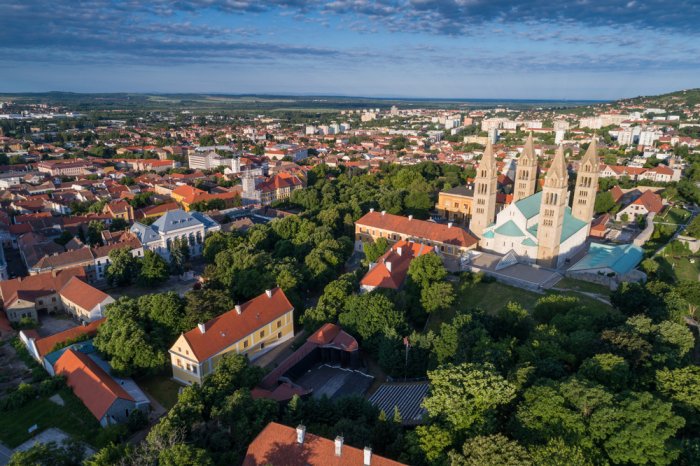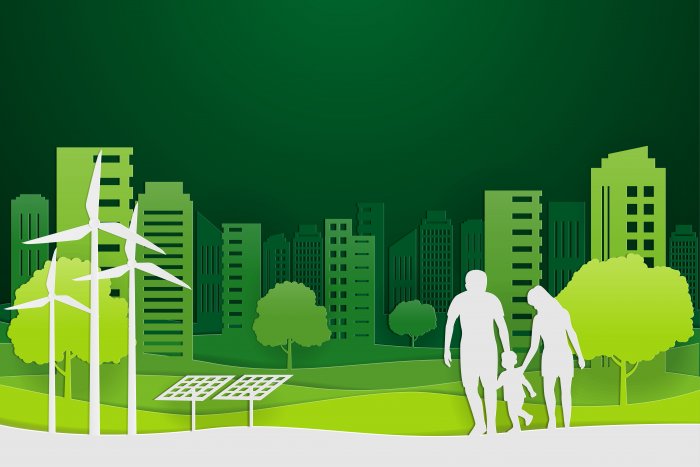COP26 has Implications for Central and Eastern Europe

Graphic by urbanbuzz / Shutterstock.com
Climate change has come to the fore of the news agenda and social and political activism, with the COP26 United Nations climate change conference in Glasgow. Questions remain about how the event could impact Hungary and the wider Central and Eastern Europe region regarding energy usage, transportation policy, air quality, built environment, raw material use, and air quality.
“Energy usage is more and more the subject of two main drivers: decarbonization and energy consumption reductions. COP26 will most likely strengthen these two elements, as the EU’s decarbonization strategy and EU climate law sets ambitious but also clear targets in this regard,” comments Zsombor Barta, founding partner at Greenbors Consulting and president of the Hungary Green Building Council (HuGBC).
“To reach zero-carbon operations in 2050, energy production must be transferred to low- or zero-carbon [sources], and overall energy consumption must also be reduced. This will cause major changes in Hungary and Central Europe, as a significant amount of energy is still generated by coal or natural gas,” he points out.
“Further, residential [buildings] especially are the subject of deep renovation strategies to meet the ambitious targets and zero-carbon requirements. This will certainly affect the Hungarian and Central European markets,” Barta adds.
EU climate law and the overall decarbonization strategy are also impacting transportation policy. Some countries have already announced that internal flights will be forbidden and short distance flights will be eliminated, such as Budapest-Vienna.
“This will change the transportation environment a lot. Also, the focus on alternative transportation, electric mobility, shared mobility, etc., will change the future of the transportation environment. Because, in terms of environmental protection zones, congestion charges, or electric mobility, the CEE region is a bit behind the Western European countries,” Barta explains.
“It is expected that these elements will be introduced more and more into the CEE region to meet the decarbonization goals, but also to increase public health and air quality as well,” he says.
Urban Mobility
“Air quality is connected to urban mobility/transportation and industrial activities. I think COP26 will also strengthen the view that urban mobility must be changed to reduce CO2 emissions but also to increase livability and air quality,” Barta believes.
“However, it is important to mention that the air quality issue has to be managed in a sustainable way; not only cars are responsible for emissions, but also ships and different heating sources. Unfortunately, areas with high poverty are also subject to poor air quality in the CEE region – and this must be changed somehow as well – but this issue is more complex,” he adds.
According to Regina Kurucz, head of the HuGBC working group, COP26 goals will affect building development strategies. Real estate in areas where renewable energy sources, clean air, modern transportation, and connection to nature are a given or feasible with low effort will have an advantage. As ESG reports and green certifications become the cornerstones of development, these contributing factors are the new baseline.
“A global framework of principles is required for accelerating sustainability performance, to be adapted and verified at the local level that aligns to the 1.5 degrees [global warming] trajectory,” says the World Green Building Council.
In the meantime, raw material usage is increasing worldwide. “I do not see huge changes or signs of a real reduction in raw material usage,” Barta confirms.
“Unfortunately, we are still discussing the opening of new gravel and sand fields [in Hungary], but in the rest of the CEE, raw material usage is not reducing. I do not see a huge effect on this increasing trend coming from COP26, although all specialists agree that this is a huge problem, and one has to tackle this issue to direct our activities in a more sustainable direction,” Barta concludes.
This article was first published in the Budapest Business Journal print issue of November 5, 2021.
SUPPORT THE BUDAPEST BUSINESS JOURNAL
Producing journalism that is worthy of the name is a costly business. For 27 years, the publishers, editors and reporters of the Budapest Business Journal have striven to bring you business news that works, information that you can trust, that is factual, accurate and presented without fear or favor.
Newspaper organizations across the globe have struggled to find a business model that allows them to continue to excel, without compromising their ability to perform. Most recently, some have experimented with the idea of involving their most important stakeholders, their readers.
We would like to offer that same opportunity to our readers. We would like to invite you to help us deliver the quality business journalism you require. Hit our Support the BBJ button and you can choose the how much and how often you send us your contributions.









